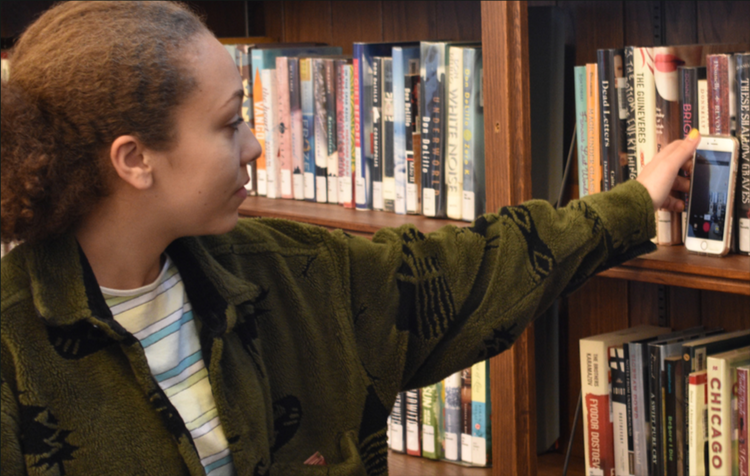TikTok encourages self-expression, community
Emerson Wright
MEME ON. Freeing her hands, sophomore Maddie Kolb gets ready to film herself dancing to the latest TikTok meme. While many people use the app in pursuit of internet fame, she mainly enjoys sharing her content with close friends, expressing herself through humor and lip-synching.
April 24, 2019
Some say it’s cringe-y. To others, it’s the pinnacle of adolescent narcissism. After all, who on Earth would want to film themselves lip-synching?
But users of the red-hot app TikTok are sick of the haters. While the video-based social-media platform is subject to near-constant ridicule, for many, it serves as an outlet for eccentric, often humorous self-expression.
The platform’s setup is simple: a user will upload a video of themselves dancing, lip synching or simply reacting to an audio clip, often taken from a song or TV show. Then, users film their own accompanying video. Repeat several thousand times, and a meme is born.
To Carly McClear, a sophomore, TikTok’s setup fosters community. One such feature is the duet option, which allows users to upload a video of themselves using the same audio as the original creator, a process which ends in the two visual clips displayed side-by-side.
“You can do the same thing as another person, or you can base another idea off them,” Carly said.
However, some feel the platform’s supportive environment is threatened by a recent surge in outside mockery. Maddie Kolb, a sophomore, fears judgement from fellow students.
“It’s low-key embarrassing if you’re not famous,” she said, reflecting on her peers’ attitude toward TikTok users.
“I’m more hesitant now to make certain TikToks,” she said, explaining how fears of mockery stifle her content. “I can’t make certain jokes without worrying about exposing myself to people I don’t want seeing them.”
While she can see where some of the ridicule comes from, Maddie wishes people would give the platform a chance.
“Some TikToks can be very cringey,” she said. “Lots of TikToks can also be really funny.”
Though most of the ridicule comes from outside, Maddie said TikTok’s “bullying problem” stems partially from within. Though generally innocuous, some use the platform’s duet feature to mock other users, holding up cruel signs or dry-heaving to mock someone’s physical appearance.
“Many trends are based on making fun of people who are different,” Maddie said. Frequent targets include cosplayers, or users who film themselves dressed as their favorite movie or TV characters.
For her, there’s more to TikTok than internet fame. She has no interest in joining the ranks of Ariel Martin or Cameron Dallas, the app’s most famous users. Instead, the memories with friends make all the ridicule worth it.
“I mainly make TikToks to laugh at with my friends,” Maddie said.
So, in spite of all the hate, these teens Fortnite-dance on, sharing fun audio clips and creative videos in colorful, meme-able protest.




























































